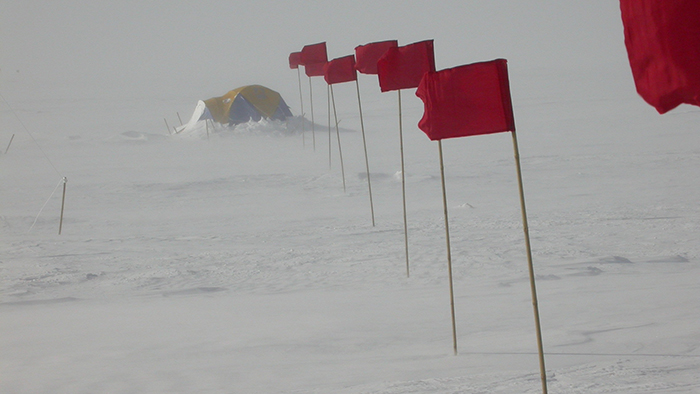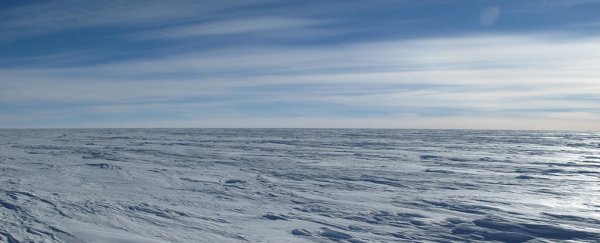Just how cold can it get on Earth? Colder than we thought, apparently. A new study of satellite data reports that valleys in Antarctica's ice sheets can reach close to minus 100 degrees Celsius (or minus 148 degrees Fahrenheit).
Very chilly then, and significantly below the previous record of minus 93 degrees Celsius (minus 135 degrees Fahrenheit) observed in the same area.
Scientists reached the new figure by looking again at remote satellite readings of temperatures on the East Antarctic Plateau, which covers the South Pole, and recalibrating these readings with updated data taken from weather stations on the ground.
The new low point is officially minus 98 degrees Celsius (minus 144 degrees Fahrenheit), a temperature that "appears to be about as low as it is possible to reach" according to the international team of researchers who worked on the new study.
"I've never been in conditions that cold, and I hope I never am," one of the team, Ted Scambos from the University of Colorado-Boulder, told Doyle Rice at USA Today.
"I am told that every breath is painful, and you have to be extremely careful not to freeze part of your throat or lungs when inhaling."
Such freezing temperatures occur in tiny pockets on the ice, the satellite readings show, up to 3 metres (or 9.8 feet) deep.
Note that this isn't the same as the lowest temperature ever recorded using instruments at ground level. That honour goes to researchers at Russia's Vostok Station, also on the East Antarctic Plateau, who gauged the temperature as minus 89 degrees Celsius (minus 128 degrees Fahrenheit) in July 1983.
These new temperatures are readings taken remotely from satellites in space, and scientists like to keep the two separate – here we're talking about specifically the temperature of Earth's surface, not the air just above ground, as a weather station would log.
 The Vostok Station. (Ted Scambos/NSIDC/CU Boulder)
The Vostok Station. (Ted Scambos/NSIDC/CU Boulder)
Both types of measurements are useful for scientists. Weather stations can log conditions exactly as they are, but satellites can cover much greater areas around the clock.
In this case the team looked at data from NASA's Terra and Aqua satellites, plus NOAA's Polar Operational Environmental Satellites, logged between 2004 and 2016. The biggest temperature dips happen at night during winter in the Southern Hemisphere, which is June, July, and August.
The new study of the data also turned up something interesting about how these record lows come about: as well as clear skies and light winds, the air needs to be extremely dry to get temperatures this far below zero. Any water vapour in the air tends to heat it up, albeit slightly.
"In this area, we see periods of incredibly dry air, and this allows the heat from the surface of the snow to radiate into space more easily," says Scambos.
Extremely dry, extremely cold air sinks into the ice pockets and the air gets colder still, until weather conditions change. The scientists say the temperature could potentially sink even lower, though an unusually long run of clear skies and dry air would be needed.
Considering the same ultra-low temperature was recorded in several places across the glacier, even many hundreds of kilometres or miles apart, the scientists think this might be as cold as it's possible to get on Earth.
And it might be a record that isn't broken for a long, long time. Increasing levels of carbon dioxide in the atmosphere, and the higher levels of water vapour that get brought along as a result, mean the conditions needed for super-cold temperatures are getting rarer.
"The radiative processes that control record low surface and air temperatures, and the changing composition of the atmosphere, imply that in the future we may see fewer extreme low temperature events," write the researchers.
The research has been published in Geophysical Research Letters.
